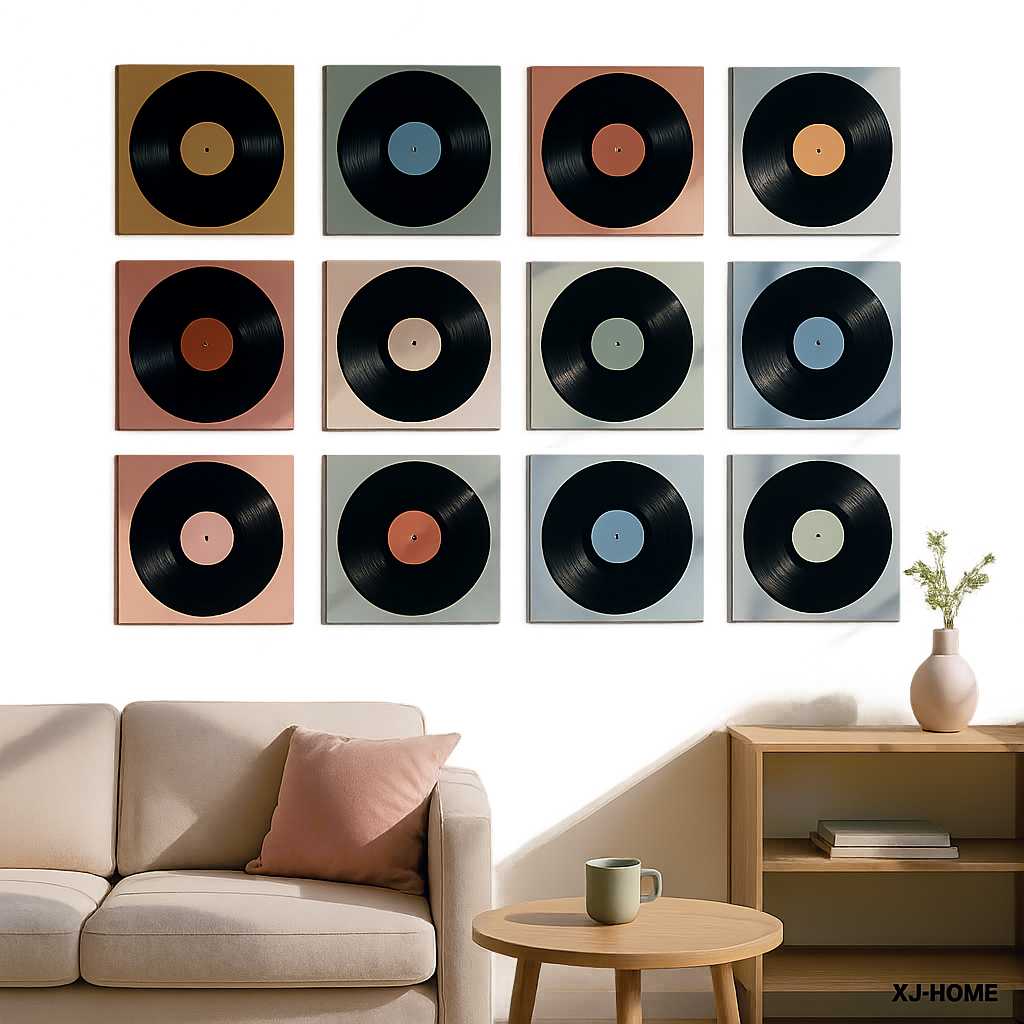The world of vinyl is enchanting, a tactile and auditory realm that captivates newcomers and seasoned collectors alike. Yet, like any passionate pursuit steeped in history and subjective experience, it's also a landscape fertile for myths, misconceptions, and well-intentioned but ultimately flawed advice. These "audiophile old wives' tales" can be confusing, costly, and sometimes, frankly, get in the way of just enjoying the music.
So, let's put on our critical thinking caps, cue up some skepticism, and drop the needle on a few of the most pervasive record player myths. Our goal isn't to be contrarian for its own sake, but to empower you with a deeper understanding grounded in science, practical realities, and the fundamental principles of sound reproduction. Because the truth, as they say, will set your grooves free.
Myth 1: Vinyl is Inherently "Warmer" and Always Sonically Superior to Digital.
This is perhaps the most romantic and enduring myth. We've all heard it: vinyl just sounds warmer, more "natural," more "musical" than cold, sterile digital.
-
The Kernel of Truth: Analog audio, by its nature, is a continuous wave, while standard digital audio is a series of discrete samples. Some listeners perceive this continuousness, or perhaps the specific harmonic distortions introduced by the analog chain, as "warmth." Furthermore, the physical ritual of playing a record—the large artwork, the act of placing needle to groove—undeniably contributes to a more engaging experience, which can easily be conflated with superior sound.
-
The Debunking:
-
"Warmth" is often a euphemism for specific colorations: a gentle roll-off in the high frequencies, a bloom in the lower midrange, or the presence of even-order harmonic distortion, which can be pleasing to the ear. These characteristics can stem from mastering choices for the vinyl release, the phono cartridge's voicing, the phono preamplifier's design, or even the inherent limitations and characteristics of the vinyl medium itself (like tracing distortion). It's not an intrinsic, universal property of all vinyl playback.
-
A poorly mastered or pressed record will sound dreadful, regardless of its analog nature. Conversely, a high-resolution digital file (24-bit/96kHz or higher) sourced from a brilliant master can offer breathtaking clarity, dynamic range, and fidelity that can expose the limitations of many vinyl setups.
-
The mastering is paramount. A song mastered specifically to take advantage of vinyl's characteristics (and mitigate its shortcomings) will sound different from one mastered for the loudness wars of digital streaming. Often, vinyl masters have more dynamic range preserved, which many listeners prefer and attribute to the format itself, rather than the mastering decision. For a deeper dive into the technical differences, sites like SoundGuys offer good comparative explanations.
-
At XJ-HOME, we champion the pursuit of high-fidelity sound, irrespective of the medium. The goal is to get closer to the artist's original intent, and that requires quality components and well-mastered recordings, whether they spin on a platter or stream from a server.
-
Myth 2: Heavier Platters Always Mean Better Sound.
The logic seems intuitive: more mass equals more stability, right? This leads many to believe that the heavier a turntable's platter, the more immune it will be to speed variations and the better it will sound.
-
The Kernel of Truth: Mass does contribute to speed stability through the flywheel effect – a heavier platter, once spinning, resists changes in speed more effectively. It can also help in damping unwanted resonances.
-
The Debunking:
-
It's not just about total mass, but also its distribution. A platter with more mass concentrated at its perimeter will have a greater flywheel effect than one with the same total mass distributed evenly.
-
The material of the platter is critically important. Acrylic, Delrin, various metal alloys (like aluminum or stainless steel), glass, and even constrained layer damping (CLD) designs all have different densities, resonant frequencies, and damping characteristics. A well-engineered, moderately heavy platter made from an acoustically inert material can outperform a poorly designed, very heavy platter made from a resonant material.
-
The turntable's motor and bearing assembly are equally, if not more, crucial. An underpowered motor struggling to start, stop, and maintain the speed of an excessively heavy platter can introduce more problems (like motor strain and noise) than the mass solves. A high-quality, precision-machined bearing is essential for minimizing rumble and ensuring smooth, silent rotation, regardless of platter weight.
-
The overall system design matters. Simply slapping a heavier platter onto a turntable not designed for it can throw off the suspension (if applicable) and put undue stress on the bearing and motor.
-
Myth 3: You Need to Spend Thousands for Decent Vinyl Playback.
The glossy magazines and online forums filled with eye-wateringly expensive gear can certainly give this impression. Is good vinyl sound only for the wealthy?
-
The Kernel of Truth: High-end audio equipment can offer exquisite build quality, advanced engineering, and a level of sonic refinement that is truly captivating. There's no denying the allure and performance of a statement piece.
-
The Debunking:
-
The law of diminishing returns hits hard in audio. The sonic difference between a $500 setup and a $1,500 setup can be significant. The difference between a $15,000 setup and a $50,000 setup? Often far more subtle and dependent on ancillary equipment and listening environment.
-
There are many excellent entry-level and mid-range turntables, cartridges, and phono preamplifiers available today that can provide deeply satisfying musical experiences without requiring a second mortgage.
-
Setup is king. A modestly priced turntable that is meticulously set up—with correct cartridge alignment (overhang, zenith, azimuth), tracking force, anti-skate, and Vertical Tracking Angle (VTA)/Stylus Rake Angle (SRA)—will almost invariably sound better than an expensive turntable that's poorly configured. This is an area where knowledge and care trump sheer expenditure.
-
The quality of your records (pressing quality, condition) and your listening room acoustics will also have a massive impact on perceived sound quality, often more so than incremental upgrades in hardware.
-
At XJ-HOME, we believe in empowering audiophiles with knowledge. Understanding how to optimize your current system, as explored on our website https://xenonjade.com, often yields greater sonic dividends than simply buying more expensive boxes.
-
Myth 4: Direct-Drive Turntables are Only for DJs and are Sonically Inferior for Audiophile Listening.
Thanks to the legendary status of the Technics SL-1200 in DJ booths, direct-drive turntables are often typecast as workhorses unsuited for the delicate sensibilities of audiophile listening, with belt-drive being the "audiophile choice."
-
The Kernel of Truth: Direct-drive turntables offer high torque and rapid start/stop times, making them ideal for DJing. Some early or poorly implemented consumer direct-drive designs did suffer from "cogging" (slight speed variations as the motor magnets passed the coils) or transmitted motor noise to the platter.
-
The Debunking:
-
Modern, high-quality direct-drive systems, particularly those featuring coreless motors and sophisticated servo control circuits, deliver exceptional speed accuracy and stability, often exceeding that of many belt-drive designs. They are less susceptible to the speed drift that can occur with belt stretch or wear.
-
Many highly regarded audiophile turntables today are direct-drive, including revived Technics models (like the SL-1200G/GR and SP-10R) and offerings from other respected manufacturers. These are engineered for vanishingly low noise and impeccable speed precision.
-
Belt-drive turntables have their own potential issues: belts can stretch, slip, or dry out over time, requiring replacement. The motor, though isolated, can still transmit vibrations if the isolation isn't perfectly implemented.
-
The quality of implementation – motor design, platter damping, plinth construction, and overall engineering refinement – is far more important than the drive type itself. Both direct and belt drive can achieve superb audiophile performance when executed well.
-
Myth 5: Stacking Records on Top of Each Other Will Damage Them.
This is a common warning, often leading to meticulous single-record handling at all times.
-
The Kernel of Truth: Old-school automatic record changers, which literally dropped records onto a stack on the platter, could indeed cause scuffs, scratches, and wear over repeated plays.
-
The Debunking:
-
For manual turntables, temporarily placing a few LPs (say, 2-4) on top of each other on a clean, flat surface (like the turntable lid or a dedicated record stand) while you're selecting the next one to play is highly unlikely to cause any damage. The pressure is minimal and distributed.
-
The real culprits for record damage are:
-
Dirt and dust: Abrasive particles in the grooves act like sandpaper under the stylus.
-
Scratches: From improper handling, sliding records in and out of paper sleeves without inner poly-lined sleeves, or dropping them.
-
Worn or damaged stylus: This will permanently damage grooves.
-
Incorrect tracking force or anti-skate: Can cause uneven wear.
-
-
Long-term storage is different: Records should always be stored vertically, not stacked horizontally. Horizontal stacking for extended periods can lead to warping due to uneven pressure and the weight of the records themselves. The Library of Congress offers excellent guidelines on the proper care and storage of sound recordings, emphasizing vertical storage.
-
Myth 6: You Can Clean Records Effectively with [Insert Common Household Item/DIY Concoction].
From wood glue to window cleaner to various alcohol-based solutions, the internet is awash with DIY record cleaning "hacks."
-
The Kernel of Truth: Records get dirty from dust, fingerprints, and airborne contaminants, and cleaning them is essential for good sound and longevity.
-
The Debunking:
-
Many household cleaners contain detergents, abrasives, or solvents that are not formulated for the delicate vinyl polymer and can leave residues or even permanently damage the groove walls. Isopropyl alcohol, while a component in many commercial record cleaning fluids, should be used in specific dilutions (typically with distilled water and a surfactant) and not undiluted, as high concentrations can potentially leach plasticizers from the vinyl over time, making it brittle.
-
The infamous wood glue method, while capable of lifting out surface debris, is risky. It can leave residue if not perfectly applied and removed, or worse, pull out chunks of vinyl if the record is already compromised.
-
Purpose-made record cleaning fluids are formulated by chemists who understand the material science of vinyl. They are designed to effectively remove contaminants without damaging the record surface or leaving harmful residues.
-
Proper cleaning also involves the right tools: soft, non-abrasive brushes (like carbon fiber for dry dusting or specialized wet cleaning brushes) and lint-free microfiber cloths. For serious collectors, a vacuum record cleaning machine or an ultrasonic cleaner represents the gold standard for deep cleaning.
-
The Final Groove: Listen, Learn, and Enjoy
The world of vinyl is a journey, not a destination. While myths and misinformation abound, a little critical thinking, a willingness to understand the underlying principles, and trusting your own ears will serve you well. Don't let dogma dictate your enjoyment. The real magic isn't in adhering to every audiophile superstition; it's in the profound connection to the music and the satisfying ritual of playing records.
So, question the "conventional wisdom," do your research, experiment (safely!), and most importantly, keep those records spinning. Happy listening!





Leave a comment
All comments are moderated before being published.
This site is protected by hCaptcha and the hCaptcha Privacy Policy and Terms of Service apply.